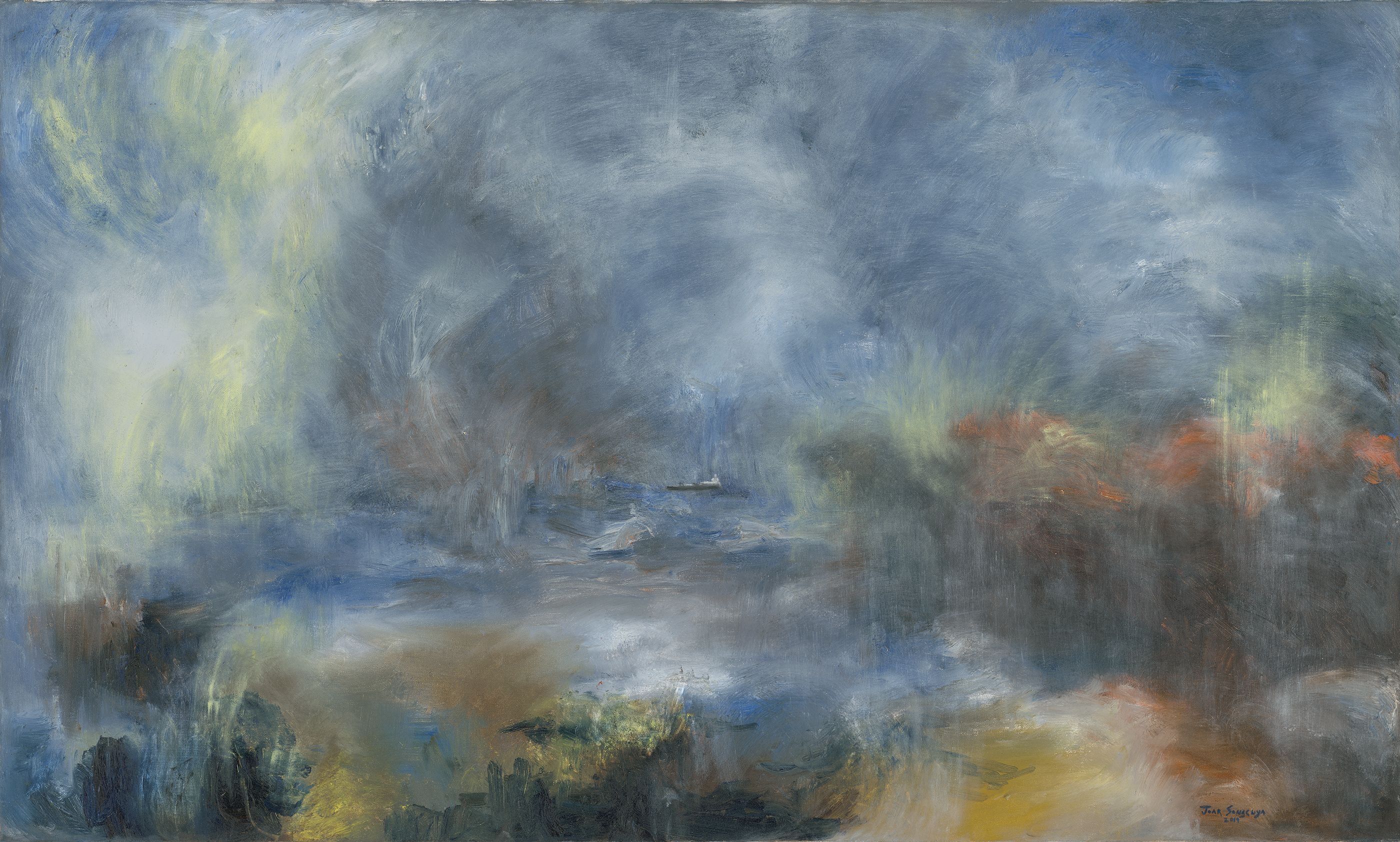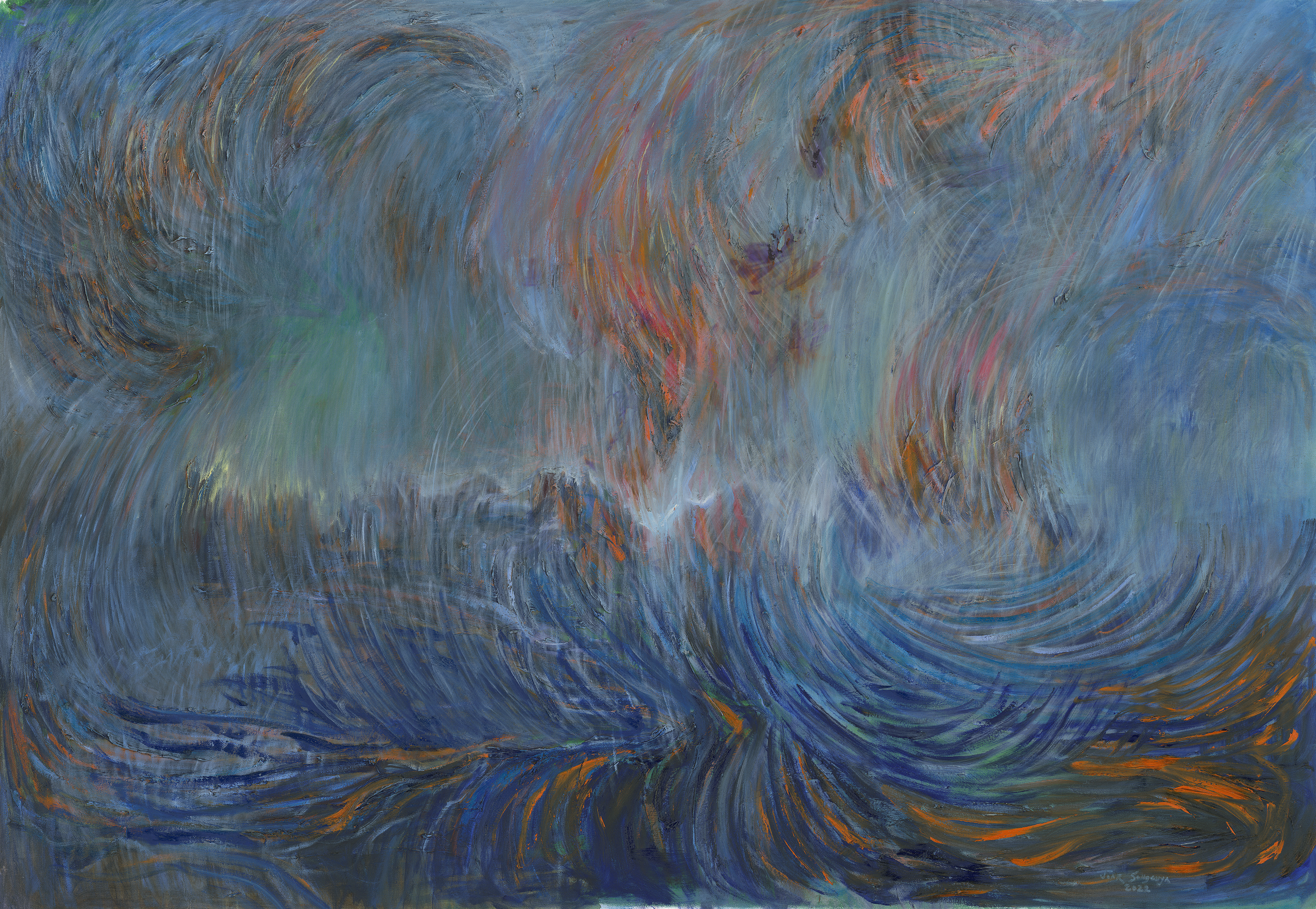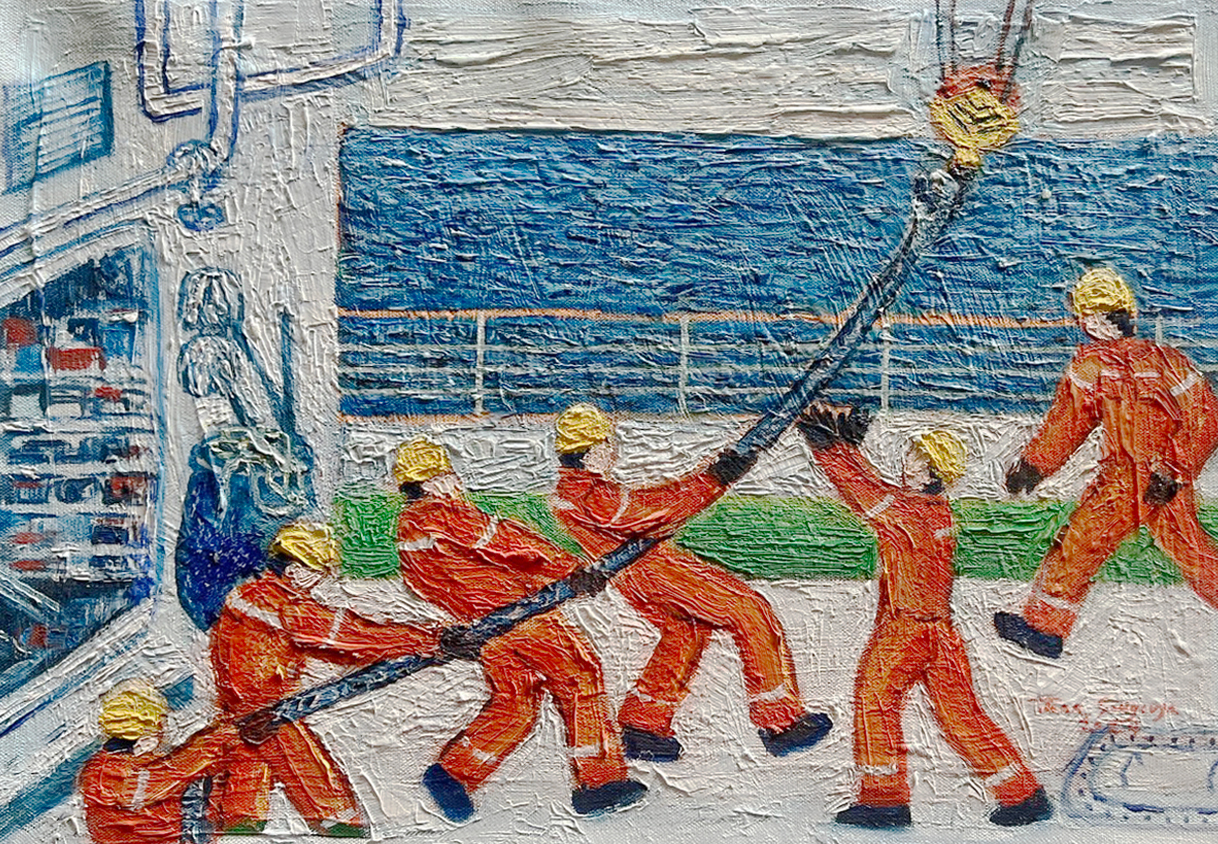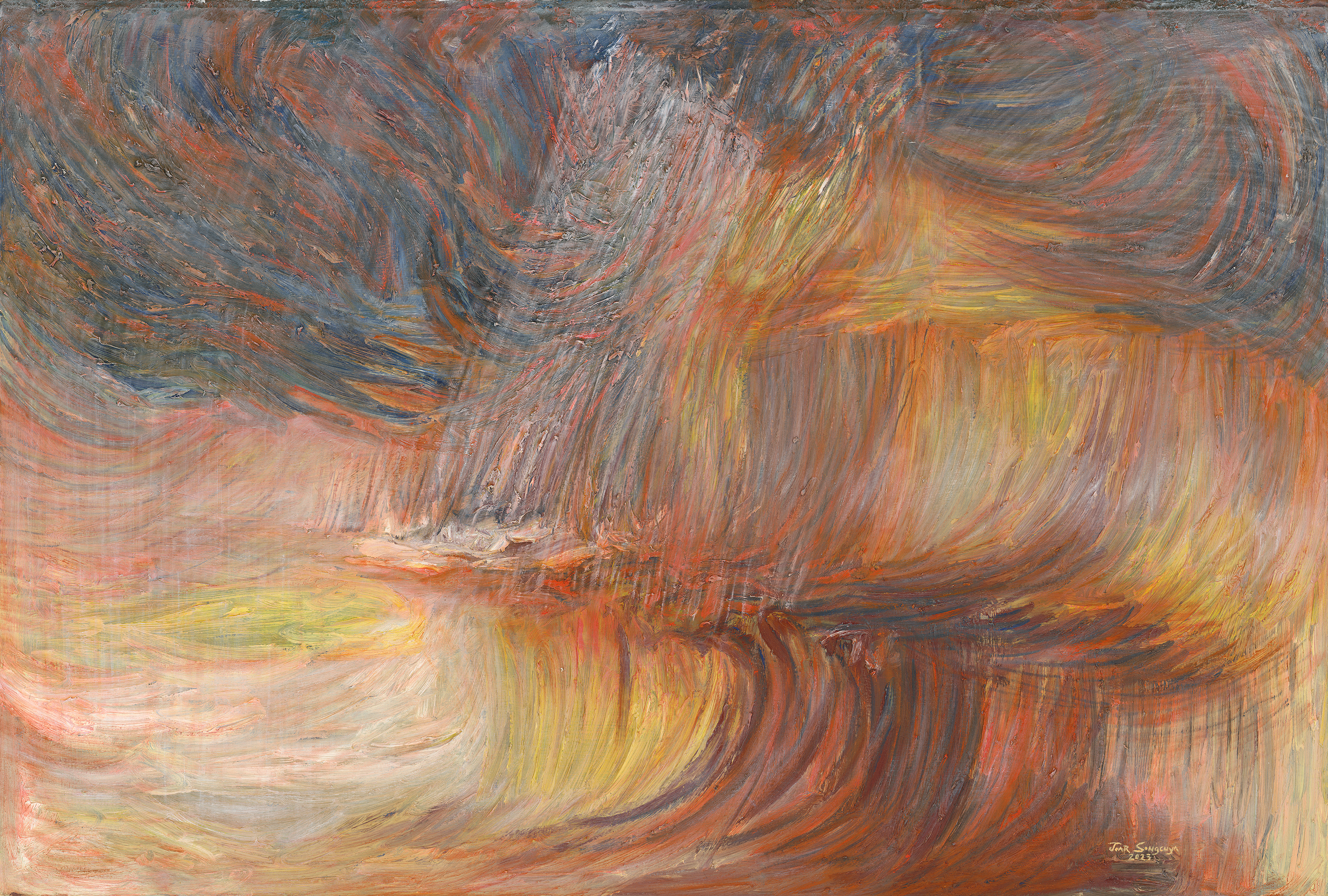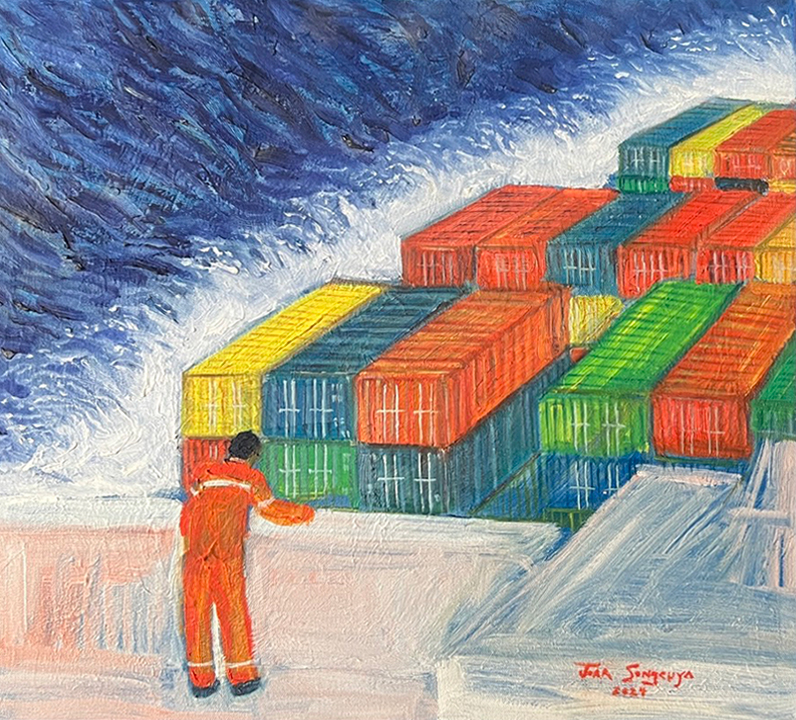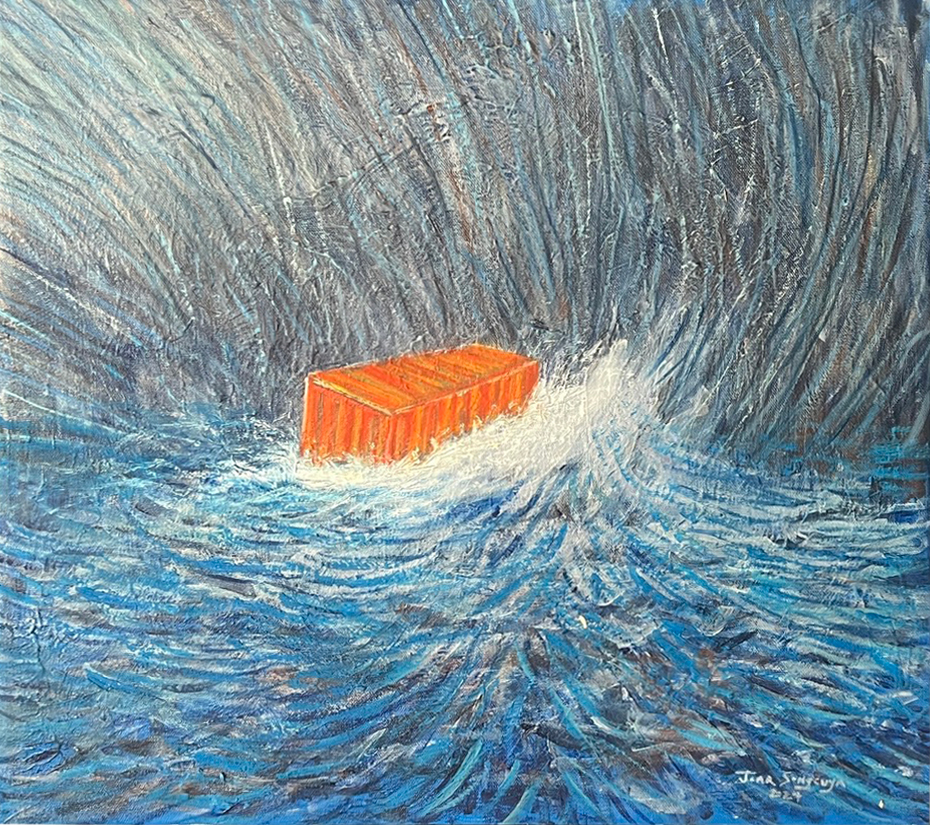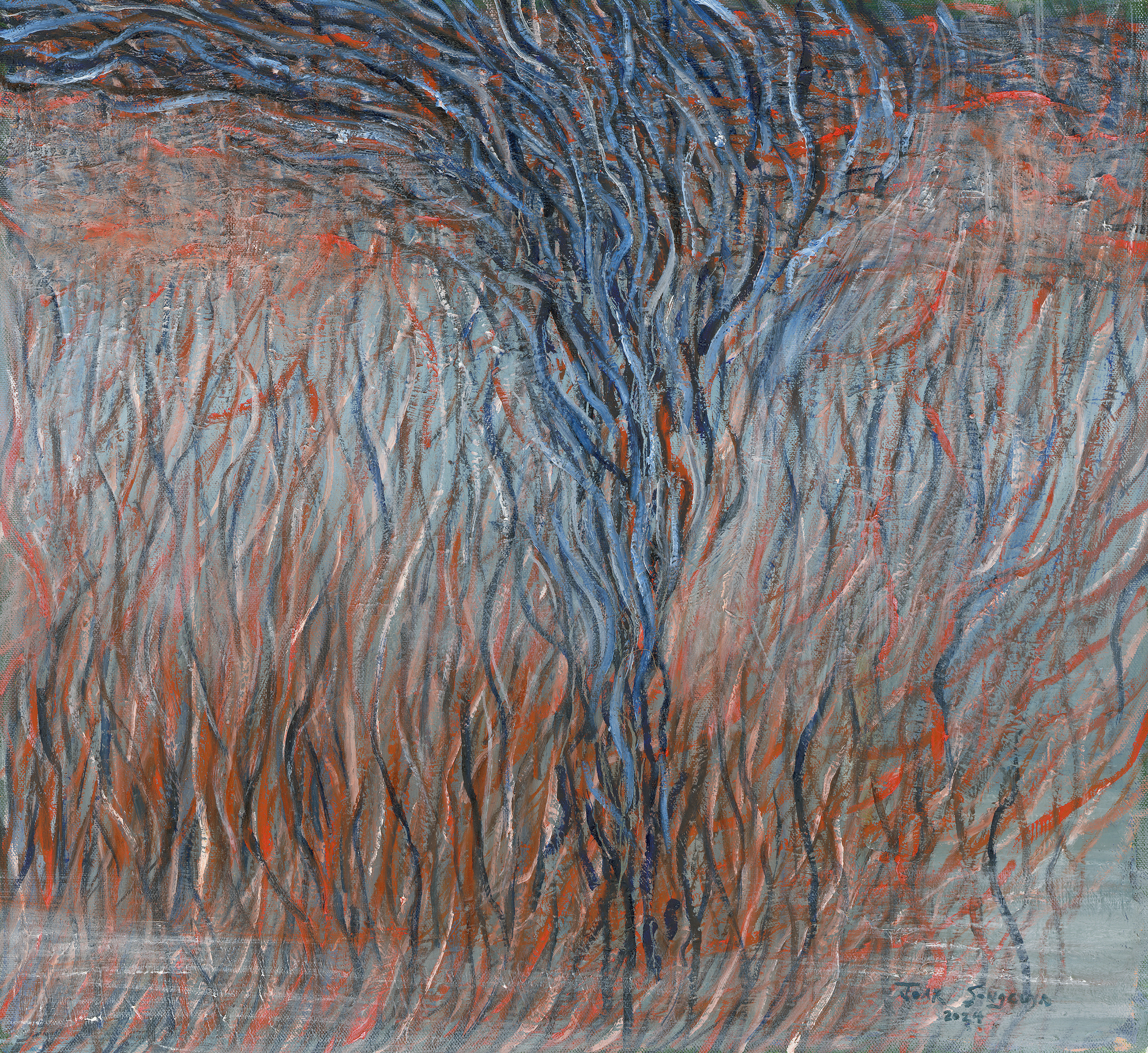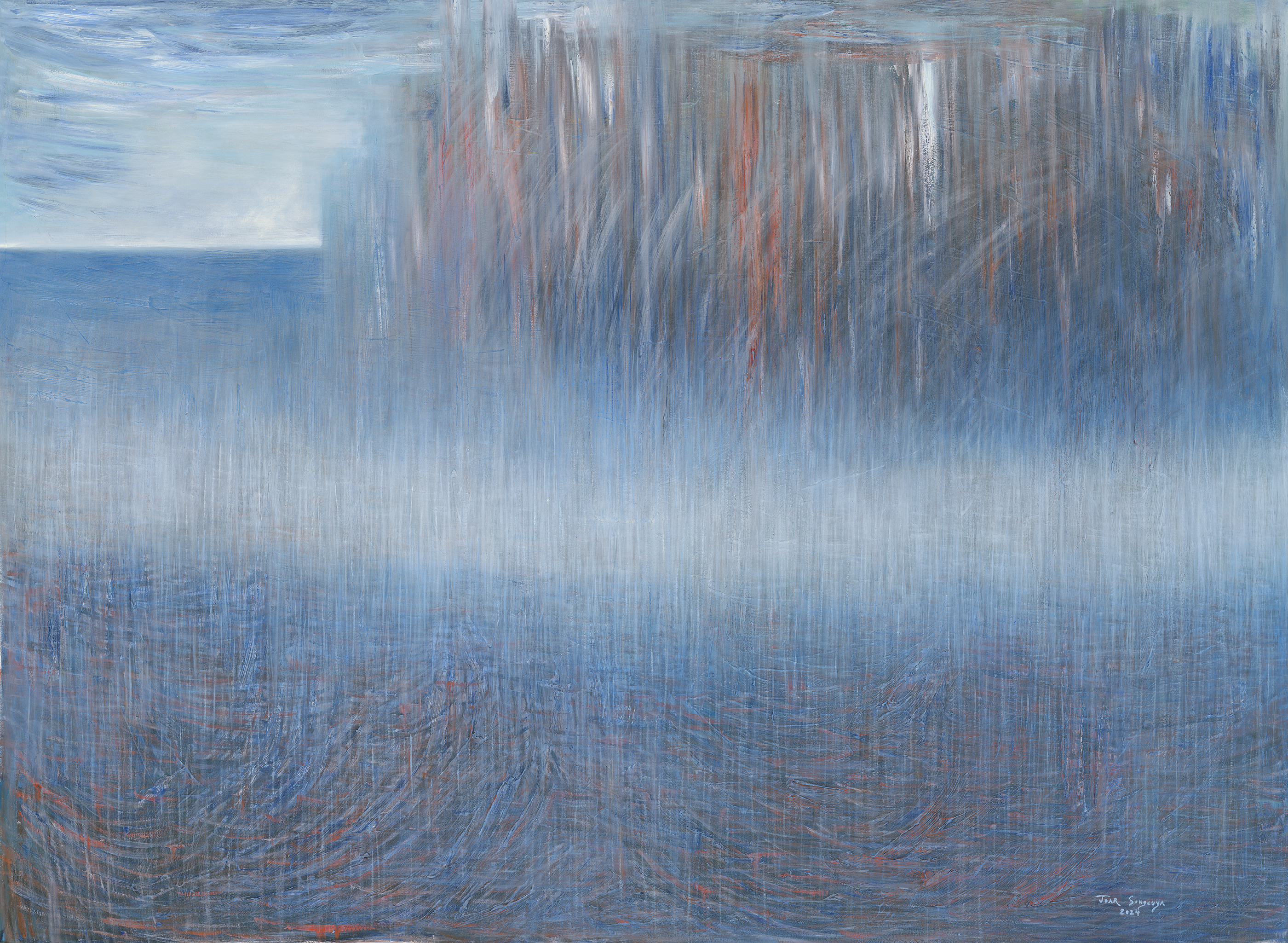卓爾·松庫亞是一位自學成才的畫家。曾經作為航海士和海洋工程師,在過去曾經的十年來一直乘坐輪船歷險世界。在遊歷50多個國家和86個國際航運港口和碼頭的生命歷程中,他對水與無國籍、移民、海洋學、工程、海洋生態和海上勞工等主題產生了濃厚的興趣,所有這些都與他的祖國菲律賓-一個海洋國家息息相關。
在松庫亞的作品中,在大型輪船上工作的船員經常成為寓言式的主題,其中表達出焦慮、渴望和孤獨的感受。他的創作努力反映了對存在深刻性的追求,旨在追求真理,而不僅僅是製作美觀、可接受、有趣甚至恐怖的作品。這種對真理的追求使他的作品因其坦率和社會相關性而比同時代新藝術家的作品更具引人注目的優勢。
松庫亞的優點之一在於他能夠創造出一種獨特的藝術語言,令人信服地傳達他的想法。他的藝術作品建立了自己的象徵宇宙,融合了個人記憶、失落經驗和慾望。它們指出了藝術與海上日常經驗之間界限的協調和跨越,這是他過去生活和工作的核心。此外,他的美學哲學強調其繪畫的深刻精神品質以及揭示其作品內在和諧的能力。松庫亞的作品真實、自信,細膩而大膽,體現了對於創作母題的深刻理解和對複雜性的熟練描繪。
Joar Songcuya is a self-taught painter, seafarer, and marine engineer who has spent nearly a decade sailing the world aboard commercial ships. During his travels to over 50 countries and 86 international shipping ports and terminals, he developed a deep interest in themes such as water and statelessness, migration, oceanography, engineering, marine ecology, and sea-based labor, all of which are relevant to his homeland, the Philippines—a maritime nation.
In Songcuya's artworks, Filipino seamen working on large ships often serve as allegorical subjects, expressing feelings of anxiety, longing, and desire. His creative endeavors reflect a quest for existential profundity, aiming for truth rather than merely producing aesthetically pleasing, acceptable, entertaining, or even macabre pieces. This pursuit of truth lends his work a compelling edge over that of new artists of his generation due to its candidness and social relevance.
One of Songcuya's strengths lies in his ability to craft a unique artistic language that convincingly conveys his ideas. His artworks establish their own symbolic universe, blending personal memories, experiences of loss, and desires. They point to the negotiation and transgression of boundaries between art and the everyday experiences at sea, which were central to his life and work. Moreover, his aesthetic philosophy emphasizes the profoundly spiritual qualities of his paintings and his ability to reveal the inner harmony of his compositions.
Songcuya's artworks are authentic, confident, and simultaneously delicate and bold, reflecting his deep understanding of his subjects and his skillful portrayal of their complexities.
Instagram ︎︎︎
Artsy︎︎︎
Press
Digicast Negros ︎
Life Style Asia ︎
Manila Bulletin ︎ ︎ ︎
Malaya Business Insight ︎
Spot ︎
The Manila Times ︎
航海與儀式 On Navigation and Ritual
作為一名畫家,Joar Songcuya通過穿越如同希臘文學中神話般的七片海域,解開個人的歷史——他曾經作為一名海洋工程師在這些場域流轉。數千年以來很多事情都發生了變化,但這些場域仍然存在。他將它們描繪成過去、現在和未來。Songcuya用自己的雙眼看到這些海洋起伏的波浪和邊界的漣漪,儘管它們不斷地變化和流動,它們卻始終不變。
十多年以來,他作為一名水手和航海員的生活將他帶到六大洲和無數個國家和文化,有些地方它能夠探索,有些則僅能在船上遙望,但漸漸的,這些地圖上的地點開始串連成環繞地球的線條。
這些探索的時間裡他拿起了畫筆,在畫布上塗抹顏料,作為對無盡海上夜晚的回應,主題會是他的船上同伴,或是被水和雲所包圍的地平線,甚至是一些無法解釋的東西,因為它們只能被經歷而無從解釋。當時他不知道這點。他不明白當時自己正在(重新)發現自己。每到一個陌生港口,每見到一個陌生的面孔,每次船隻進入一個新的海域,他都是在進行一次朝聖。
波斯灣的洋流與紅海並不相去甚遠。自紅海出發,船隻將經過蘇黎世運河。這是通往地中海的日落之門。向北航行會進入愛琴海,愛琴海流入黑海,黑海再到裏海。從地中海返回,亞德里亞海則位於西邊。它們屬於同樣的水域,但環境、語言和共鳴各有不同。
就像繩索上的繩結,這七片海域沿著一條主要用於商業或貿易目的的海上航線站點。英雄和史詩的時代已經一去不復返,奧林匹斯的神祇也不再存在。他曾經是一名水手——也永遠是一名水手——曾穿越古代海域的他已經成為一個容器,裝載著過去千年的情感,並將其傾注到畫作中,之後再次完整了自己。
Contemplating life as
a painter, Joar Songcuya unravels personal histories by traversing the mythical
Seven Seas of Greek literature — places that he himself had been to as a marine
engineer. After thousands of years, much has changed, but these places still
exist. He paints them as the past, the present and the future. Songcuya, with
his own eyes, saw the undulating waves and the bounding ripples of these seas;
and how despite constantly shifting and flowing, they are unchanged.
For over a decade,
his life as a sailor and seafarer brought him to six continents and countless
countries and cultures. Some places he was able to explore, some just a view
from the ship; but one by one, little by little these dots on the map began to
draw lines that went around the globe.
During this time, he
took up a brush and dabbed paint onto canvas as a way to cope with endless
nights at sea. The subjects were either his companions, or the horizon as
bookended by water and clouds, and even something that cannot be explained as
it can only be experienced. He didn’t know this at the time. He didn’t know
that he was (re)discovering himself. That every unfamiliar port, every strange
face, each and every time that the ship enters a new sea, he was on a
pilgrimage.
The Persian Gulf runs currents not so far from
the Red Sea. From the Red Sea, the ship would pass through the Suez Canal. This
is the sunset gateway to the Mediterranean Sea. Sailing North leads to the
Aegean Sea, which flows into the Black Sea. which becomes the Caspian Sea. Back
from the Mediterranean, the Adriatic Sea is further to the West. They are all
the same water, of different circumstances, languages, and resonances.
Like knots on a rope, the seven seas were stops
along a maritime route now largely used for commercial or trading purposes.
Gone are the days of heroes and epics, there are no more Olympian deities. He
who was once a sailor – who will always be a sailor – and had traversed the
ancient seas, has become a vessel himself, containing the temper of past
millennia and emptying it onto paintings, after which he becomes full again.
Exhibition Note by Francisco Lee
